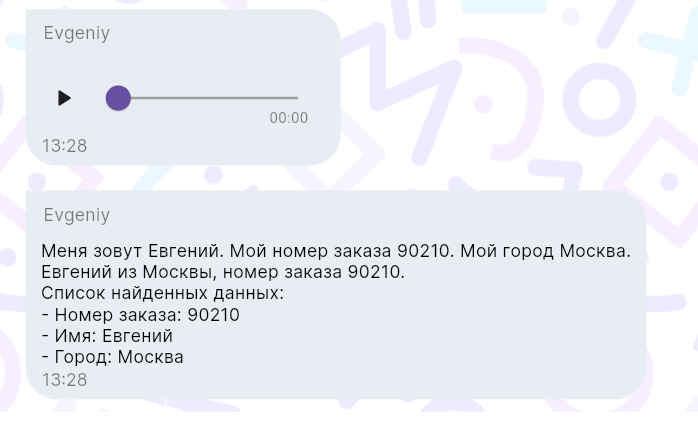Блок «Разбор голосового файла (GPT)» переводит файл с голосовым сообщением в текст, составляет краткое содержание и находит в сообщении нужные данные.
Для работы блока в боте нужно подключить модель ChatGPT. Подробную инструкцию смотрите в статье Подключение ChatGPT. Блок поддерживает форматы файлов: ogg, flac, mp3, mp4, mpeg, mpga, m4a, wav, webm.
Настройка блока
1. Перейдите в Редактор сценариев и добавьте блок «Разбор голосового файла (GPT)» на рабочую область.
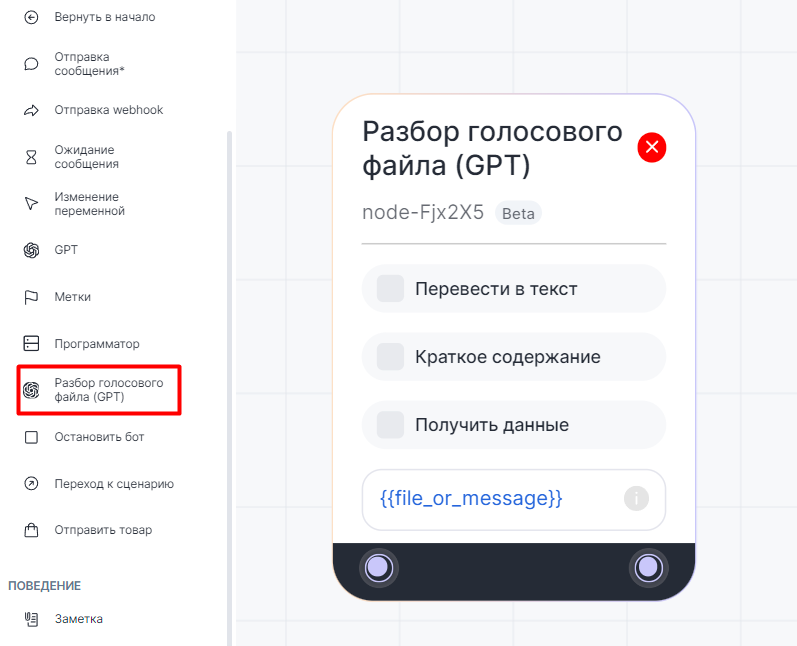
 2. Выберите нужные действия в блоке:
2. Выберите нужные действия в блоке:
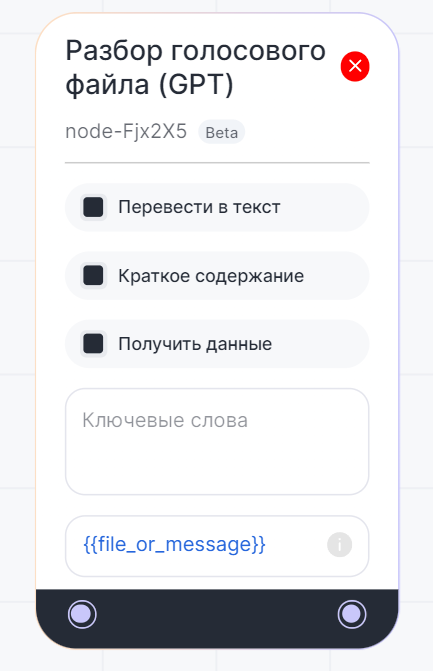
- Перевести в текст — переведет аудиосообщение в текст;
- Краткое содержание — составит краткое содержание аудиосообщения в текстовом формате;
- Получить данные — найдет информацию в аудиосообщении по ключевым словам. Их нужно ввести в поле «Ключевые слова», например: телефон, имя, номер заказа. После каждого ключевого слово нажмите «Enter», чтобы оно попало в список;
- Поле выбора файла или текста — для анализа блоком. По умолчанию в нем переменная «file_or_message» — принимает значения аудио и текста. В поле можно добавить ссылку на аудиофайл, вписать текст или переменную — свою либо системную: {{message}} (текст), {{file_link}} (ссылка на аудио файл), {{file_or_message}} (аудио или текст).
3. Результат обработки сообщения блоком «Разбор голосового файла (GPT)» можно сохранить в блок «Отправить сообщение».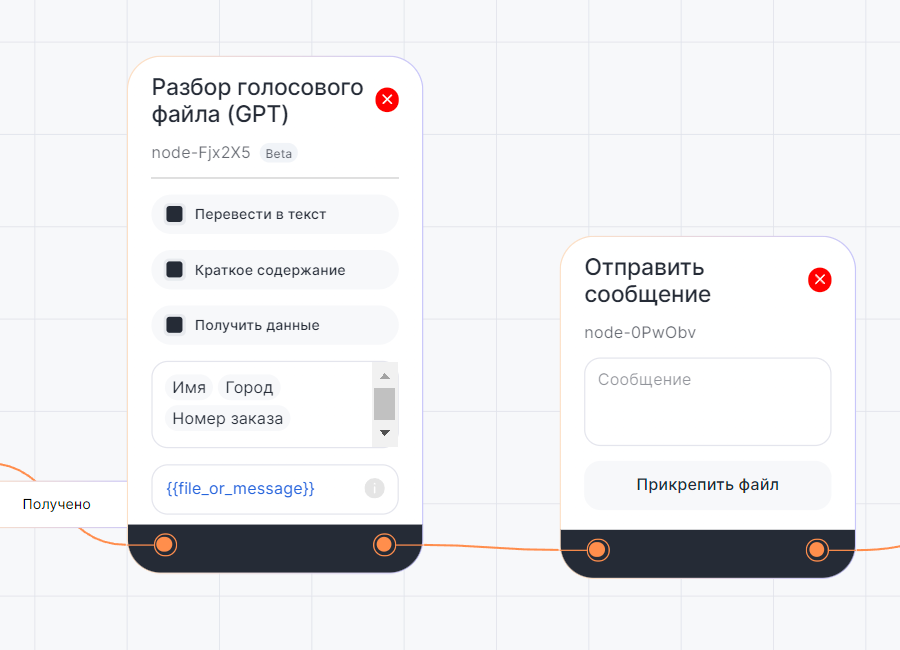
 4. Чтобы вставить в блок «Отправка сообщения» результат обработки сообщения, введите две фигурные скобки «{{» и в выпадающем меню нажмите «Результаты блоков». В разделе «Разбор голосового файла» выберите нужный результат:
4. Чтобы вставить в блок «Отправка сообщения» результат обработки сообщения, введите две фигурные скобки «{{» и в выпадающем меню нажмите «Результаты блоков». В разделе «Разбор голосового файла» выберите нужный результат:

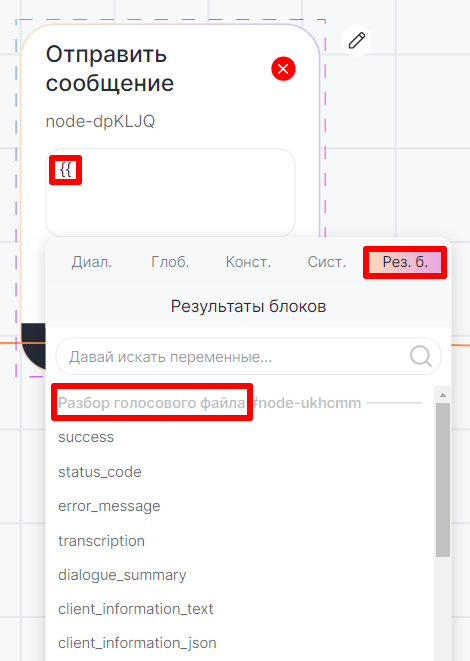
- transcription — текстовая версия аудиосообщения.
- dialogue_summary — краткое содержание.
- client_information_text — собранные данные о клиенте, отсортированные по ключевым словам. Например «ФИО: Семен Семенович Семенов Номер телефона клиента: 79999999999 E-mail: chatApp@ChatApp.ru»
- client_information_json — собранные данные о клиенте, отсортированные по ключевым словам в формате json.
6. Сохраните и опубликуйте бот.
Пример использования в Конструкторе ботов
Можно создать бот-помощник, чтобы пересылать ему на расшифровку голосовые сообщения клиентов. Бот будет возвращать текстовую версию, краткое содержание и данные: имя клиента, город, номер заказа.
После того, как клиент отправил голосовое сообщение, бот его расшифровал:
